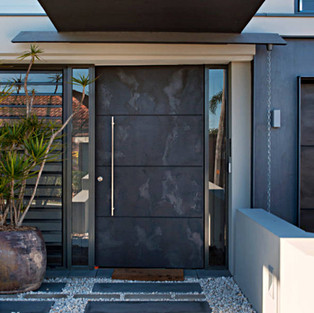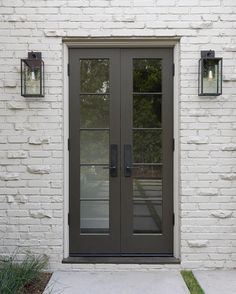More Eastern in Western Building, please
- Mar 26, 2019
- 5 min read
Updated: May 13, 2019
Ready to be wiser, less agitated, & more thoughtful?
Last week Rusty and I had an interesting discussion over lunch with a fellow colleague, Jay Watts with AFM. Jay was explaining the basics behind several Eastern building design principles, and the relevance to today’s home building was quite intriguing! Here’s a quick intro on ways to create balance in your home and living space.
DEFINING A SPACE

Buildings and homes are more than just artistically appealing designs or superficially pretty surroundings – they are living spaces that provide quality of life and opportunities for growth and prosperity.
Let's put this notion of space into perspective.... You can count on the sun rising and setting every day – it's a fundamental law of the universe. We can all agree that we're residents here on planet Earth, which physically lies in a specific spot relative to the universe.... Hence everything about our individual lives is directly connected to the universal in which we live. (Mind blowing, I know)
Now consider how this can apply to your home. Feng shui is the eastern-born art of arranging buildings, objects, space and life to achieve harmony and balance.
The main difference between the practices of feng shui (or "vastu" in the Hindu culture) and Western traditions is a belief that we as humans are connected to the spaces we inhabit. The idea behind it is to unblock the way, so energy may flow freely and create life balance.
ARCHITECTURAL PRINCIPLES
Putting Peace, Prosperity & Health into Action
The orientation of a building has a dramatic and easily-measured impact upon quality of life.

· Buildings with entrances on the east side particularly bring the most auspicious effects like good health, affluence and fulfillment. North entrances are also beneficial for bringing influence, prosperity and happiness to life.
· Forget the Wheaties – move your bed. Orienting your bed to face south-east towards the rising sun also has a clear relationship with a natural way to awake in harmony with nature.
· Our brains naturally tend to function with reference to direction. Architecturally this transcends into designing living spaces optimal for the different areas in our lives. Getting our work tasks accomplished, enjoying family bonding time and getting a good night’s rest are all necessary functions impacted by your home’s orientation. (…more on that in a minute)
· Improperly oriented houses bring influences of fear, poverty, problems, lack of success, and chronic diseases. In fact, medical and statistical studies validate the effects of orientation on our health and prosperity. Approx 75% of homes and buildings are improperly oriented.
· Good news - you don’t have to knock down a wall to move your front door. If your front door is facing south but your garage door is facing east, try entering and exiting the home through the garage and see if you feel a difference in your daily productivity.

Strategic Floor Plan Layouts
Placement of Rooms
Most of us are aware that getting a sunburn is easier and faster from 11am – 1 pm. Why is this? Wouldn’t you know that the sun has differing qualities of energy as it moves across the sky.
We can’t move the sun, but we CAN build our homes according to the ideal placement of each room. Homes should be designed so that the different energies of the sun correspond to the specific function and activity in each room.
For example, when one enters the study, one will feel more alert. When one enters the living room, one will feel naturally convivial. We use these spaces naturally during different times of the day. Fortune-creating buildings are designed so that the differing activities that we perform within the various rooms of a home are aligned with the appropriate quality of the sun and its orientation.

Use the Right Proportions

Ever noticed that we all tend to want symmetry? We place TV’s in the center of the room on a wall. And if you have a bookcase on one side of the TV, chances are you have a bookcase on the other side, too. Proportion is a natural instinct and is key to successful design in nature. Right proportion and measurement in buildings strengthen the connection of our individual intelligence -- thus allowing us to focus.
Natural & Nontoxic Materials
Sustainable building includes the use of natural, non-toxic materials as well as designing buildings that are suitable to local climatic conditions. All of these building practices have one common denominator – they all conserve energy. (not only environmental energy but also your very own body's energy)
Most natural building materials require less energy to manufacture while lending beautiful natural home appeal. Wood and bamboo are renewable resources with endless uses and exterior brick, stucco and stone are structurally very strong and work to naturally to insulate spaces -- all of which are energy saving implementations.

It’s no surprise that lessening the chemical load on your body will directly lessen your body’s stress levels – another law of nature! You’ll find there are many productive ways to use your energy when it’s not spent dealing with bodily stress… Natural finishes like quartz, porcelain/ceramic tile and non-toxic paint and adhesives are good for our health and make for excellent building materials.
QUICK TIPS TO ADD BALANCE & HARMONY TO ANY HOME
The front entry should be clean, unencumbered and well maintained
The entry area should be free of trash bins, yard tools and other distractions. House numbers should be clearly visible and easy to read. The entry area is the face of the house, you pass it several times each day and it is the first thing that greets visitors: it should be an area that evokes positive energy.
Keep areas of rest separate from areas of work
A home office should be distinct from living or sleeping areas. Physical and/or psychological design elements should be strategically located to separate places of rest from places of work.

Cut the clutter
There should be a place for everything to be stored, and rooms should be clutter free. Clutter in the home restricts the flow of positive energy and results in cluttered thinking. A tidy, well organized home fosters a calm and relaxed environment.
Get rid of unused items
As a simple matter of home maintenance, items that are unused evoke bad energy and should be removed. That old [fill in the blank item in your garage] that you keep thinking that you’re going to fix up (but never do) is messing up your Chi.
Promote natural ventilation and an abundance of daylight inside the house
Large floor to ceiling windows maintain a maximum amount of natural daylight while operable windows in the right locations allow for excellent natural ventilation.
The center of a house should be empty
Space in the center of your home allows energy to circulate properly. This can be accomplished by moving the couch closer to a wall and/or relocating tables and chairs. Freed up space works well with the circulation of a house and allows common areas to share common square footage.
There's plenty more to learn... check back soon for more on Eastern design principles, including the use of colors to up your home's Chi factor as well as highlighting natural elements like water and fire!
Have ideas for creating an inviting and stress-free space? Feel free to share your comments below!
Want to know more about how to best maximize your living environment?
Follow our blog - the #HappyHomeHappyLife blog!







Bình luận